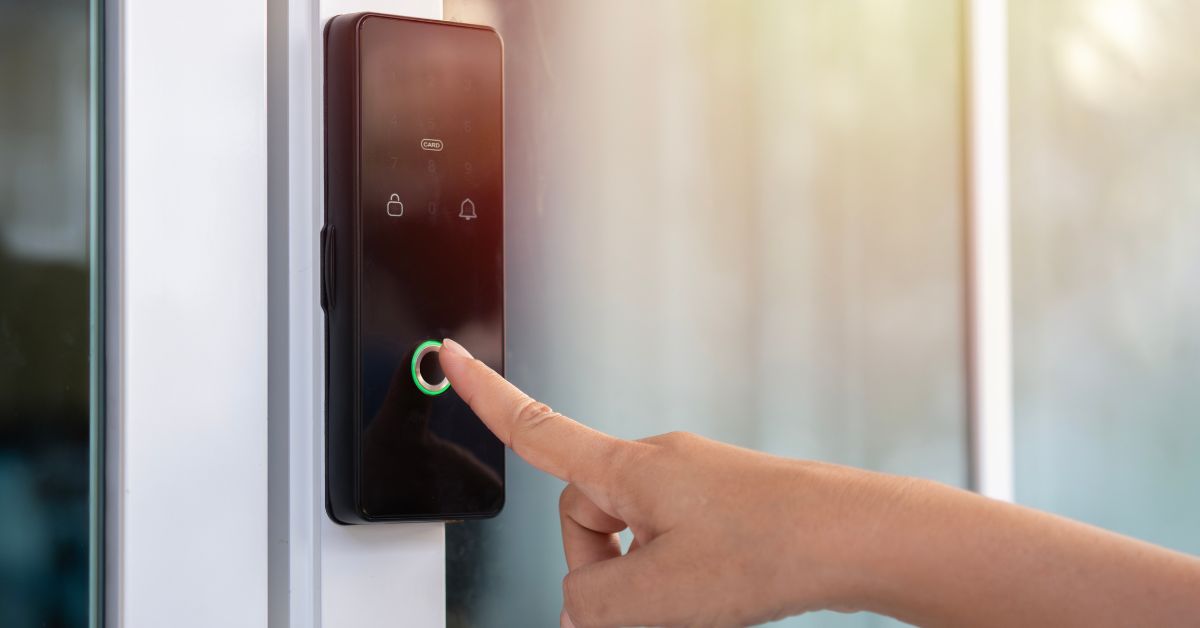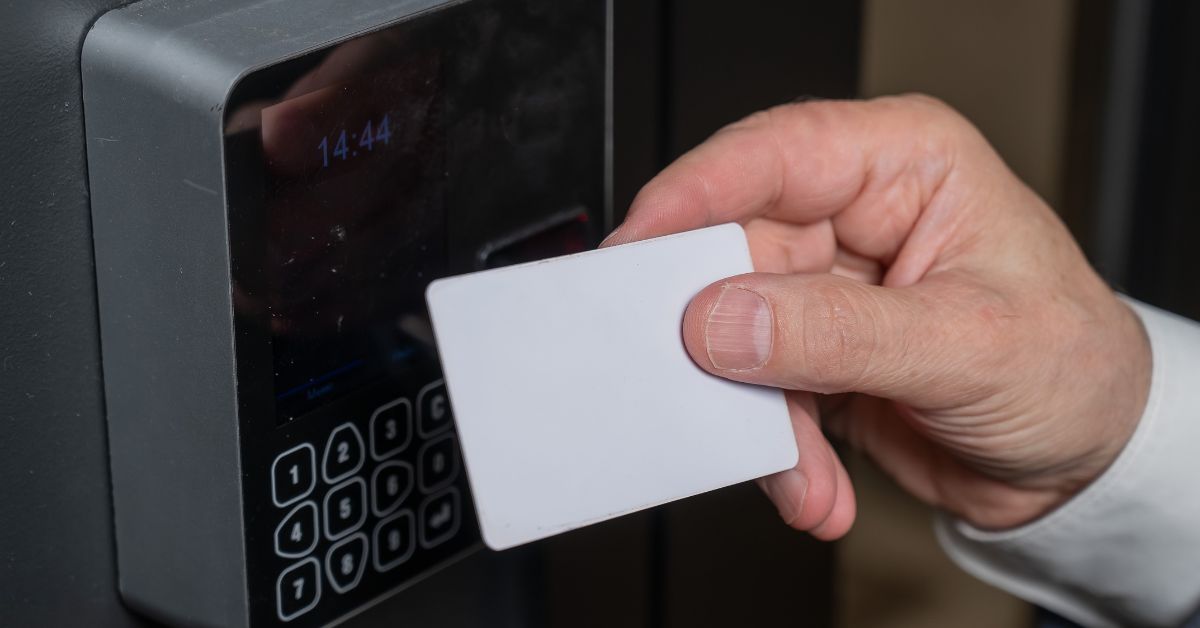The Benefits of Electric Locks for Commercial Doors

Customizable Access Levels
Electric locks allow businesses to segment access levels based on roles and responsibilities. For example, an HR manager might have access to administrative offices but not sensitive IT server rooms. This flexibility ensures that only authorized individuals gain entry to specific areas, creating a layered security system.
Unlike traditional locks, where anyone with a key can freely move about, electric systems provide an added layer of control. Businesses can also quickly modify these permissions if someone’s job duties change, keeping the security system as dynamic as the organization itself.
Tamper Alerts for Immediate Action
The tamper alert functionality of electric locks safeguards your property against unauthorized attempts. If someone tampers with a lock, the system triggers an alert, sending a real-time notification to security personnel or management.
This allows business owners to respond immediately, whether it’s dispatching security staff or reviewing surveillance footage. For businesses handling high-value goods or sensitive information, this feature minimizes risks and keeps operations secure.
Keeping Track With Audit Trails
An audit trail is an activity record for your facility. Electric locks log when and where people access rooms, giving businesses full visibility over secure spaces. If an incident occurs—such as missing inventory or damage in restricted areas—you can quickly review the logs to identify who entered the space and at what time. This capability simplifies investigations, which is especially helpful for companies in regulated industries like health care or finance.
Efficient Access Management
Managing physical keys can lead to delays, inefficiencies, and confusion, especially as a business grows. Electric locks simplify access management through smart features that adjust and scale with ease, whether for permanent staff, contractors, or temporary visitors.
Scalable Solutions for Growing Teams
Scaling security systems to accommodate several new employees requires extensive work, but electric locks provide a simple alternative. These systems can seamlessly add or remove users, suiting different-sized organizations.
For example, a growing marketing firm can easily assign door access credentials to new hires without replacing locks or disrupting the workflow. This adaptability ensures the system evolves with your operation.

Scheduled Access for Time-Based Control
Electric locks give businesses the ability to program access to align with specific time frames. Cleaning staff, for instance, can gain access to the premises before or after office hours without needing permanent credentials.
This setup prevents misuse, as systems automatically restrict access beyond the designated timing. Vendors delivering inventory or service personnel conducting repairs benefit from this feature, as they can perform their work without requiring someone on-site to monitor them.
Integration With Smart Systems
The ability to integrate with smart systems is another benefit of electric locks for commercial doors. Connecting these locks to lighting, climate control, or even security cameras creates a cohesive workspace. For example, if an authorized employee enters the office after hours, the lock can trigger the lights and HVAC system to activate in their designated area. This level of automation reduces energy waste while personalizing the environment for those accessing the premises.
Furthermore, the locks complement biometric recognition or RFID technology. Employees can gain entry using fingerprints, facial scans, or RFID-enabled keycards that only respond to their credentials. These technologies add another layer of security while quickening the entry process.
Overall, integration with everyday tools creates a functional workspace for everyone. Imagine a lock system that pairs with smartphones to enable mobile access. Employees avoid carrying multiple keys or badges, benefiting from faster entry times and reduced hassle. Beyond security, this improves productivity by helping teams move efficiently.
Cost Effectiveness Over Time
Traditional locks might seem less costly upfront, but long-term expenses prove otherwise. The expense of replacing locks or duplicating keys every time an employee loses one or leaves the company quickly adds up. Electric locks completely remove this hassle!
You can update or revoke access permissions for smart credentials through a simple software adjustment. For example, if a high-turnover retail store hires temporary staff, adjustments can happen whenever someone exits or enters the team.
Moreover, durable electric lock mechanisms reduce the need for constant servicing. Unlike mechanical locks, which wear down due to frequent use, smart systems contain fewer moving parts at risk of breaking. Businesses benefit from lower repair bills and extended lifespans of their locking hardware.
Advantages Over Conventional Systems
Switching to electric locks leads to long-term returns that go beyond direct savings. Security incidents resulting from misplaced keys or unauthorized access can be costly, both in damages and reputation. Electric locks prevent these risks with reliable control and detailed records. Over the years, the upfront investment in upgrading to electric locks pays off through cost avoidance and operational consistency.
Ultimately, these locks demonstrate their value day after day, whether through reduced maintenance, high durability, or lower risks of access issues.
Enhanced Safety During Emergencies
Emergencies demand quick thinking and reliable systems. While traditional locks offer limited flexibility, electric locks have innovative features that prioritize safety and protect lives. The locks enable automated lockdown with the press of a button, securing all doors immediately. This capability ensures that unauthorized access becomes impossible, containing potential risks and protecting employees and valuables within moments. For example, a shopping center can quickly freeze movement in certain zones during a perceived threat while still allowing emergency responders to access the premises.
During emergencies like fires, a secure building must also guarantee controlled and efficient evacuation. The locks incorporate emergency egress features, which comply with fire codes while facilitating rapid exits. For instance, doors may unlock temporarily during an evacuation alarm, ensuring small bottlenecks don’t delay occupants moving to safety.
Regardless of the emergency, employees and visitors have better peace of mind knowing the locks create a secure space. Even during unthinkable scenarios, electric locks allow businesses to prioritize safety.

Future-Proofing and Final Thoughts
Electric locks are a forward-thinking investment for businesses aiming to modernize their security. These systems adapt seamlessly to growth, whether it’s adding new locations, expanding staff, or integrating technologies like advanced biometrics.
Regular software updates ensure they stay compatible with evolving tools, extending their lifespan far beyond traditional locks. Beyond security, they simplify access while reducing operational costs.
By choosing these locks, commercial spaces increase safety and efficiency while preparing for future changes. Electric locks truly serve modern enterprises.

Author
Greg Richard
Chief Technical Officer and Founding Member of DoorHub.com